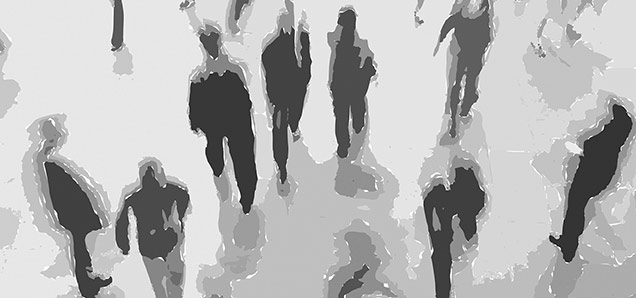ARTiculation: Technology crafting art
 CREDIT: THINKSTOCK
CREDIT: THINKSTOCKFine art done with a mouse doesn�t cheapen the work.
I'm going to let you in on a secret that not many people in the art world will admit: I can't draw. I mean, I can, but not exceptionally well by industry standards. I can conjure more than a stick figure, but my technical skills are definitely lacking when it comes to any sort of accurate depiction.
If I'm looking at a person who is modeling for me, I can study his/her nose and see the subtle shades and contours of it — how the light falls on the first side of the nose and that there's a sharp crescent-shaped highlight on one nostril. I can see in my mind how it will look in my sketch. But somewhere between my mind and my pencil, the concept gets lost and I end up with a less than eloquent depiction of the person.
Artists used to need to be able to draw or paint well because that was the only resource they had to bring something from their imagination to a canvas. But to let you in on another secret that not many of us like to admit: not anymore.
Creative people often feel that they need to get an idea out on canvas to be able to cope with every day life. That is me. So because I am not a very skilled drawer, I spent a great deal of time being frustrated and disappointed with myself, unable to capture what it was I felt on my paper. Being creative in nature and having the hand-eye co-ordination and patience to draw something precisely, are not mutually exclusive things. You can have one or the other.
Those who draw blueprints for houses may not all be creatively inclined, but they can draw the heck out of a granny split. I can conceptualize an amazing idea in my mind, but end up covering my work until it looks like a Jackson Pollock. For all those who are with me, there is hope. Technology has provided a unique opportunity for artists living in creative limbo.
I suppose a prominent example of technology being used to enhance art is the invention of the photo collage. Artists would go out, take photographs of different parts of their imagined scene — a waterfall, a fireman, a kid eating a lollipop and a skyscraper. Then they would develop the photos, cut out the parts of them they wanted, and construct the scene with all of these things using scissors and glue. They would then use the (newly-invented) photocopier to copy that page and it would become a flat image of the imagined scene. Artists could create what they saw in their minds without ever picking up a utensil.
If we skip ahead a few decades and look at the relationship between art and technology, the resources are now abundant. There are numerous tools we can use to create the image we'd like, but the biggest advancement is, of course, the computer.
We have seemingly unlimited ways that we can now depict an image. You can take a photograph like collagers used to or draw an image from scratch digitally. There are programs for editing images, digitally tracing, cutting, distorting and recolouring images. There is a delete button! You can re-do something as many times as you want until you get it perfect. The possibilities are endless when it comes to creating a piece of art digitally. And you don't have to have impeccable hand-eye co-ordination — just a functioning index finger.
Some say that this cheapens fine art. If all it takes is clicking a button, what special skills do we have? What the computer doesn't account for is creativity. The ability to visualize something smartly in your mind is a skill that not everybody has honed as finely as an artist. You need to understand things like composition, balance and colour compatibility, even if you can't seem to draw anything that doesn't look like a blob. The digital age doesn't cheapen fine art; it enriches the palette of those of us who struggle to manifest our imagination.
If you're intuitively creative, there isn't much in your way of actualizing your idea on a canvas.
Editorial opinions or comments expressed in this online edition of Interrobang newspaper reflect the views of the writer and are not those of the Interrobang or the Fanshawe Student Union. The Interrobang is published weekly by the Fanshawe Student Union at 1001 Fanshawe College Blvd., P.O. Box 7005, London, Ontario, N5Y 5R6 and distributed through the Fanshawe College community. Letters to the editor are welcome. All letters are subject to editing and should be emailed. All letters must be accompanied by contact information. Letters can also be submitted online by clicking here.













